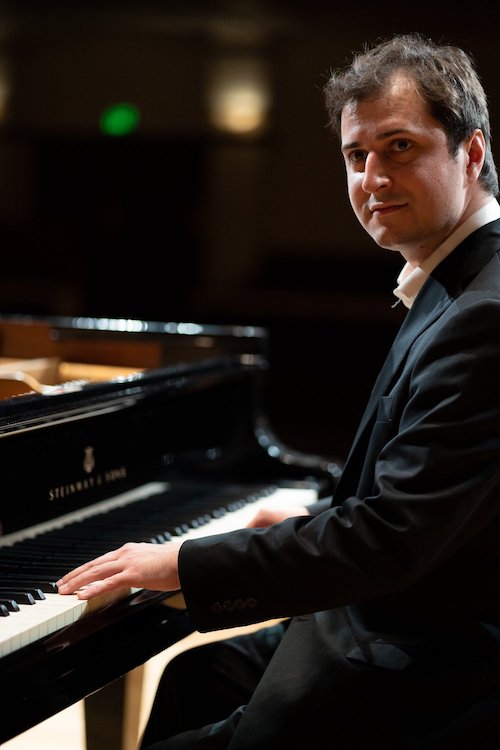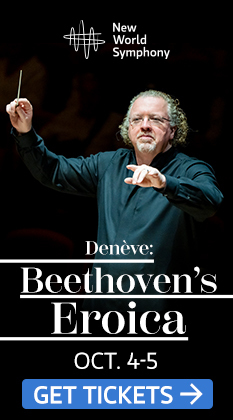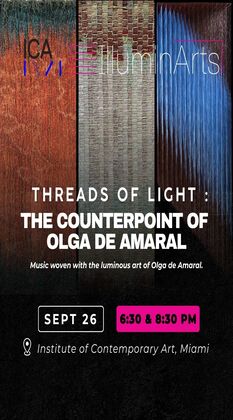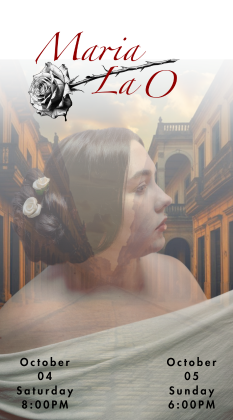Kenneth Broberg thrills with Chopin and Liszt at Miami Piano Festival

Kenneth Broberg performed a recital Saturday night in Miami Beach for the Miami International Piano Festival. Photo: Lee Clifford
Pianist Kenneth Broberg thrilled, delighted, and enchanted in an intimate recital at the Wolfsonian Museum at Miami Beach Saturday night. Presented by the Miami International Piano Festival, the program brought together favorites by Chopin and Liszt set beside less-often -heard works by Weber, Fauré, and Medtner.
The Minnesota native—a silver medalist at the 2017 Van Cliburn Competition—was most effective in Chopin’s Ballade No. 4 in F minor Op. 52. Chopin’s final ballade, it is considered the most technically demanding of the four and one of the composer’s finest works, a perfect example of Chopin’s marriage of lyricism and pianistic virtuosity.
Broberg’s interpretation was as ecstatic, melancholy, and passionate as the music demanded. Though fully his own, Broberg’s rendition gave life to the piece in a way that served the music above all else. A particular sensitivity to the complexities of the ballade’s structure, as a whole and within every smaller phrase structure, key change, and variation, was immensely effective. With striking nuances in dynamics and rubato, Broberg brought the audience on a journey in which it was easy to get lost in every beautiful, tragic, or tempestuous moment.
Three works by Fauré served as a palette cleanser between Chopin and Liszt: Barcarolle No. 9 in A minor, Op. 101, Nocturne No. 7 in C-sharp minor, Op. 74, and the Barcarolle No. 8 in D-flat minor, Op. 96. All were played with total proficiency, especially in their technically demanding passages. Broberg’s structurally nuanced approach to the Chopin carried over into all but the third of Fauré’s works, where it perhaps added too much sobriety. In these piano works, the composer meanders through lush harmonic color from moment to moment, tending to subordinate the musical architecture.
Also a standout was the closing work of the evening, Liszt’s Dante Sonata, a work inspired by the Hungarian composer’s reading of The Divine Comedy. The huge opening chords led into swashbuckling chromatic runs, familiar territory in a Liszt work, but feeling fresh in the pianist’s hands. Roaring into the consonant sonorities of the second theme group, meant to represent the choirs of Heaven, Broberg’s playing remained firmly balanced, even in this florid music, allowing for a cohesive and impactful reading. Even in the quieter sections, Broberg highlighted the tension in the ambiguities of the music’s direction and exploited them for dramatic effect.
It is worthwhile to note Broberg’s stamina as a performer; the Liszt, alive and thrilling at every moment, was taken after an hour and a half of solo music, with no intermission and only short breaks between works.
Music of Nikolai Medtner opened the evening. Medtner’s work, for its time, was decidedly traditional—the selected piece, Idyll-Sonata-Pastorale, Op. 56, the composer’s final sonata, contains echoes of Beethoven’s late works. Completed in 1937, one can only imagine how traditional this work sounded at the time, when, for example, the Rite of Spring had its explosive premieres nearly 25 years earlier.
The Sonata is pastoral and wandering in character, mature and thoughtful, with only brief, but passionate, digressions. Broberg embraced the introspective qualities of the music, letting it breathe and speak for itself, following it through its many slopes with ease and energy as needed, creating a poignant opening for the evening.
Weber’s Fourth Sonata in E minor, Op. 56, followed the Medtner, where Broberg’s very effective reading was Lisztian. As an early romantic composer, Weber follows the conventions of sonata form in a dynamic and expressive language. While cantabile melodic lines sparkled, the forte passages of the Weber stood out, particularly in developmental sections, where Broberg directed sequences tempestuously to great effect.
The Wolfsonian as a space is quite beautiful, essentially a stone grotto with art-deco flair, repurposed as a performance space—visually, a wonderful place for an intimate recital. Unfortunately, the acoustic of the stone enclosure is over-resonant to the extent that some of the fast passages became blurred. To Broberg’s credit, his articulation weathered these difficulties, perhaps making subtle accommodations in his playing.
Alberto Cano Smit performs works by Bach, Mozart, Albeniz, Messiaen, and Ginastera 7 p.m. Sunday at the Wolfsonian Museum. miamipianofest.com
Posted in Performances
Leave a Comment
Sun Jan 29, 2023
at 12:21 pm
No Comments


